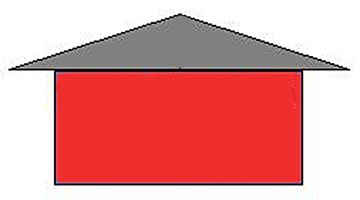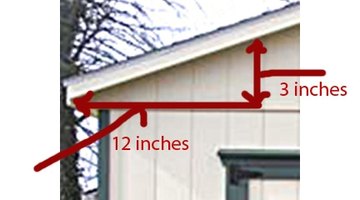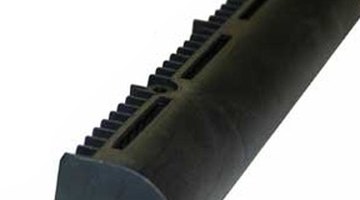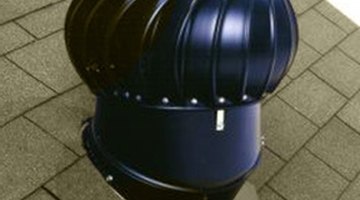How to Vent a Low Slope Roof

Things You Will Need
- Yardstick
- Pencil
- Louver vents
- Fascia vents
- Turbine vents
As the temperature inside a home rises, hot air fills the attic space. Without an adequate means of escape, the trapped air reduces the efficiency of an air conditioner during the hot summer months. In addition, the exterior shingles on your roof suffer when the heat beneath the boxing reaches high temperatures. Shingles made of asphalt composition may lose their ability to adhere to each other, creating gaps that allow water to enter the home. You will vent a low slope roof in a slightly different manner than a steep grade roof.
-
Determine the slope of your roof. This is easy once you know the trick. Place a yardstick horizontally level at the very point where the roof meets the siding. Make a small pencil mark exactly 12-inches from the starting point. Now, measure the distance from the mark you made upwards to the eave. This number denotes your roof slope. If the number is 5, your roof has a 5:12 slope.
-
Consider low slope venting when your roof slope is less than a 4:12 pitch. Any roof slope 5:12 or above is not a low slope roof. Always refer to your roof slope as a ratio. The terms “slope” and “pitch” are interchangeable.
-
Use double gable louver vents in a low slope roof. Because there is only a small rise in the attic, using two vents on opposite sides of the gable encourages proper air circulation. A louver vent installs at the very top of each gable and looks like a small setout in the siding.
-
Install a fascia venting system in roofs with a 2:12 slope or less. These roofs have very little rise and hot air pushes downward and escapes through the fascia vents. Fascia vents are limited to new construction since replacing the old fascia is an expensive task.
-
Position one or more turbine vents near the uppermost part of the roof. Turbine vents contain a small fan that spins as hot air passes through the vent. As the fan spins, it creates a vacuum that sucks even more hot air from the attic. On roofs where the slope is less than 2:12, you will alleviate hot air build up with one turbine fan for every 300-square feet of roof surface.




Tip
Ridge vents are less effective as the rise of the roof decreases. Consider installing one of the above choices for slopes less than 3:12.
Writer Bio
Glenda Taylor is a contractor and a full-time writer specializing in construction writing. She also enjoys writing business and finance, food and drink and pet-related articles. Her education includes marketing and a bachelor's degree in journalism from the University of Kansas.
Photo Credits
- Photo, curtesy of Stock.xchng. author images
- Photo, curtesy of Stock.xchng. author images
More Articles



